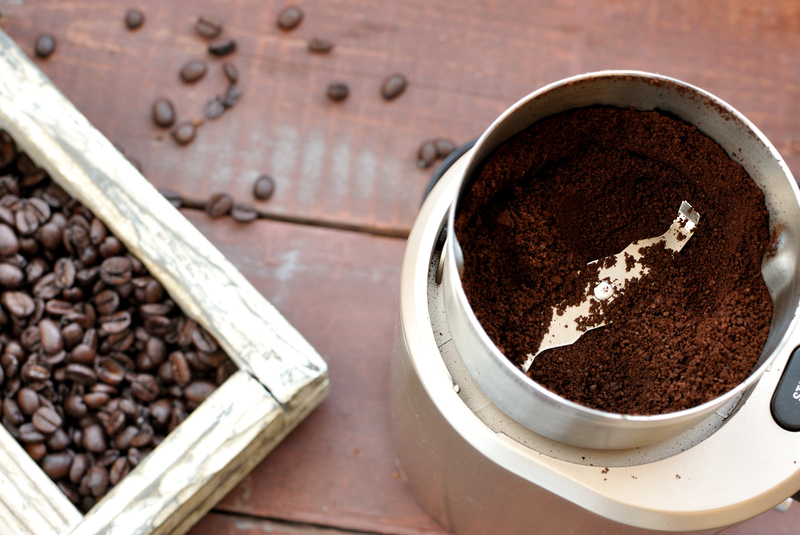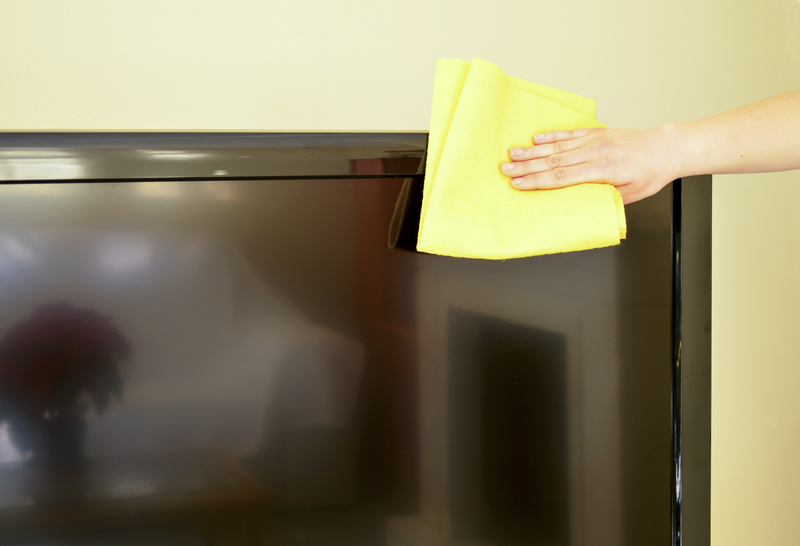Maintain the Elegance of Velvet Curtains with Proper Washing
Posted on 17/05/2025
Maintain the Elegance of Velvet Curtains with Proper Washing
Velvet curtains have long been the choice of homeowners and interior decorators aiming for a touch of royalty and sophistication in their living spaces. The plush texture, deep color, and luxe appearance of velvet drapery make them a centerpiece in any room. However, to maintain the elegance of velvet curtains with proper washing, it's essential to follow best practices designed to preserve their beauty and longevity. In this comprehensive guide, we'll explore everything you need to know about cleaning velvet drapes, curtain care tips, and expert strategies to ensure your soft window dressings stay lush and stunning for years.

Understanding Velvet Curtains and Their Cleaning Needs
Before diving into the washing process, it's important to grasp what sets velvet apart from other fabrics. Velvet consists of closely woven fibers, often silk, cotton, or synthetic blends, that create its signature pile--a soft, upright nap that catches the light beautifully. But this luxury comes at a cost: velvet is delicate, prone to crushing, and easily affected by improper washing techniques.
- Pile Sensitivity: The raised pile gives velvet its opulent look but also makes it susceptible to matting and damage.
- Color Intensity: Velvet dyes tend to be richer and more saturated, which means they can fade or bleed if not cleaned correctly.
- Fabric Blend: Whether your curtains are made from pure silk velvet, cotton velvet, or polyester, the cleaning approach may differ.
Keeping this in mind, the first step to maintain the beauty of your velvet curtains is understanding the unique characteristics of the textile. Always check the care label or contact the manufacturer for specific advice relating to your curtains.
How Often Should You Clean Velvet Curtains?
Proper maintenance is not just about deep washing but about regular, gentle care too. Follow these guidelines for a sparkling, fresh look:
- Light Maintenance: Weekly or biweekly dusting with a soft-bristle brush, lint roller, or vacuum cleaner with an upholstery attachment will prevent dust buildup on your velvet drapes.
- Spot Cleaning: Address small stains or spills as soon as they occur to avoid permanent marking.
- Deep Cleaning: To preserve the elegance of velvet curtains, deep cleaning should be performed only once to twice a year, or as recommended by the manufacturer.
Remember, overwashing or aggressive cleaning will wear your curtains out faster, robbing them of their plush appeal.
Preparing Velvet Curtains for Washing
Before starting any cleaning process, proper preparation is crucial to avoid damaging the velvet fibers. Here's how you can get your curtains ready:
- Read the Label: Determine if your velvet curtains are machine washable, hand-wash only, or require professional cleaning. Most high-end velvet is best dry-cleaned, but some synthetic blends can be carefully washed at home.
- Remove Hardware: Take the curtains off the curtain rod and carefully detach all hooks, rings, or decorative hardware.
- Shake Off Dust: Gently shake your curtains outside to dislodge loose dust, dirt, or pet hair.
- Test for Colorfastness: Before washing your velvet drapery, test a discreet corner with water or detergent to check for color bleeding or fading.
Following these steps ensures that once you proceed to washing, the risk of damage is minimized.
Choosing the Best Washing Method for Velvet Drapes
Each type of velvet, be it pure cotton velvet, crushed velvet, or modern polyester velvet, requires a tailored approach. Let's examine the main options:
1. Dry Cleaning Velvet Curtains
Many expert curtain cleaners recommend professional dry cleaning as the safest route for genuine silk or cotton velvet curtains. This method avoids direct exposure to water and rough agitation, both of which can deform the pile and ruin the drape.
- Pros: Highest level of protection for delicate, expensive velvet; preserves color and texture.
- Cons: More costly than home cleaning; dry cleaning chemicals may cause allergic reactions in some individuals.
Tip: Even if your velvet is labeled as dry-clean only, ask the cleaner if they specialize in velvet or luxury textiles.
2. Machine Washing Velvet Curtains
Some synthetic velvets, such as polyester blends or microfiber, are designed to tolerate gentle machine washing. If your manufacturer okays it, here's how to do it:
- Use a Gentle Cycle: Select the cold-water or delicate cycle setting on your washing machine.
- Use Mild Detergent: Choose a detergent meant for delicate fabrics. Avoid bleach or harsh chemicals.
- Protect the Pile: Place your curtains in a large mesh laundry bag to minimize friction and snagging.
- Do Not Overload: Wash velvet curtains separately or in small loads to prevent pile crushing.
Warning: Never use a hot water cycle or heavy-duty agitation, as this will flatten the nap of the velvet.
3. Hand Washing Velvet Curtains
Hand washing is a gentle solution suitable for most cotton and velvet-blend drapes. Here's a step-by-step process to wash velvet curtains by hand:
- Fill a Tub with cold or lukewarm water and add a small amount of detergent for delicates.
- Submerge the curtain and gently agitate with your hands. Avoid scrubbing or wringing; instead, lightly squeeze and release the fabric.
- Rinse thoroughly with cold water until all detergent is removed.
- Press out excess water between towels. Do not twist or wring, which causes the velvet to lose its lush texture.
Hand washing allows you to control pressure and temperature, reducing the risk of color fading or damage.
Drying Velvet Curtains -- Avoiding Common Pitfalls
How you dry velvet is just as important as how you wash it. Improper drying can crush the fibers and leave your curtains looking dull and worn. To maintain velvet curtain elegance during drying, follow these tips:
- Air Dry Only: Spread the velvet curtain flat on a clean, dry towel. Alternatively, hang them on a wide, padded hanger to avoid pressure marks.
- Avoid Heat: Never use direct sunlight, tumble dryers, or radiators, as excessive heat causes shrinkage, fading, and nap loss.
- Restore the Pile: Once partially dry, gently brush the nap upwards with a soft-bristled brush to revive its plush look.
Pro Tip: If your curtains are wrinkled after drying, hang them in a steamy bathroom or use a handheld steamer at a safe distance. Avoid ironing directly, as heat compresses the pile.
Stain Removal: Treating Spots on Velvet Curtains
Accidents are inevitable. When dealing with spills or stains, speedy and careful spot treatment helps preserve the life of your velvet drapes. Here's how to do it safely:
- Blot, Don't Rub: Use a clean, dry cloth to gently blot up as much of the spill as possible.
- Spot Test: Before applying any cleaning agent, test it on a hidden area of the curtain to check for adverse reactions.
- Mild Solutions: Use a solution of mild dish soap and cold water. Dab it onto the stain with a soft sponge; do not oversaturate.
- Rinse and Dry: Use a damp cloth to remove soap residue. Pat dry with towels and allow the curtain to air dry fully.
For oil-based or stubborn stains, it's safest to use a specialized upholstery cleaner or consult a professional.
Long-Term Care: Tips to Preserve Velvet Curtain Sophistication
Beyond regular washing, there are several key steps every homeowner should take to keep velvet curtains elegant over time:
- Maintain Humidity: Velvet responds poorly to changes in moisture. Use dehumidifiers to keep the room balanced, especially in humid climates.
- Prevent Sun Fade: Hang sheers or use blinds to minimize direct sunlight exposure, which can fade rich velvet colors.
- Rotate Curtains: Periodically switch the panels' positions to ensure even wear and exposure.
- Regular Grooming: Use a clothes brush or velvet brush to keep the nap aligned and free from dust.
- Storage: If you need to remove the curtains seasonally, roll them (don't fold!) and place them in a breathable bag in a cool, dry closet.
Common Mistakes to Avoid
- Never: Use bleach, harsh detergents, or fabric softeners.
- Don't: Over-wet the fabric, as this can cause water staining.
- Avoid: Hanging wet velvet, which can stretch the weave and create warping.

Frequently Asked Questions About Washing Velvet Curtains
Can I Clean Velvet Curtains Without Removing Them?
Yes, regular maintenance can be performed with your curtains hanging. Use a vacuum cleaner with an upholstery attachment, or a lint roller to remove dust and pet hair quickly.
Is Steam Cleaning Safe for Velvet Drapes?
Light steaming at a distance can refresh curtains and help remove wrinkles. However, too much moisture can harm velvet. Always check the care label, and never apply direct steam for prolonged periods.
What Should I Do If My Velvet Curtains Lose Their Shine?
Brushing in the direction of the pile with a clean, soft-bristled brush will help revitalize a matte surface. If the fabric still looks flat, gentle steaming can also help lift the nap.
Conclusion: Enjoy Timeless Luxury With Proper Curtain Care
Velvet curtains represent the pinnacle of style and coziness in home decor. Their unique play of light and rich hues can transform any space into an inviting retreat. To maintain the elegance of velvet curtains with proper washing, regular but gentle cleaning, prompt attention to stains, appropriate washing methods, and mindful drying are key. By following the techniques and recommendations outlined in this guide, you can ensure your velvet drapes remain a source of pride and beauty, enhancing your home for years to come. Treat your velvet with care, and it will continue to offer luxury, warmth, and sophistication throughout every season.









